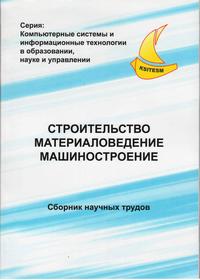Use of possibilities application of labview package in educational process
Keywords:
application of LabVIEW, virtual device, accelerometer, educational process, measuring techniqueAbstract
Purpose. Using modern computer technology allows us to simulate almost any technical processes electronically, thereby saving time and resources to implement these processes. LabVIEW is an ideal software tool for creating measurement systems and automation control systems based on the technology of virtual work devices. In the possibilities of the application package LabVIEW to use in educational process at studying of disciplines related to digital signal processing, computer measurement and automation of the experiment.
Methodology. LabVIEW-program in combination with any hardware as embedded in the computer multi-channel measurement analog-to-digital boards, capture cards and synchronize video for machine vision systems, board motion control and actuators, as well as measuring devices connected to the computer via a standard RS -232, RS-485, USB, GPIB, PXI, VXI allows you to develop systems of measurement, monitoring, diagnostics and control of virtually any complexity. The problem of constructing a virtual device that converts an electrical signal of the accelerometer sensor in angular measure using LabVIEW. Findings. The block diagram of the equations of the Fourier series expansion to the fifth harmonic. Built virtual instrument that reflects the angular deviation of the sensor according to the indications of the voltmeter. Is a graphical representation of the voltmeter readings depending on the angle of deflection of the accelerometer.
Originality. LabVIEW can develop application software for interaction with the measurement and control instrumentation, acquisition, processing and display of information and the results of calculations and modeling of individual objects, and automated systems in general.
Practical value. Using LabVIEW in scientific research, technological experiments, as well as in the educational process significantly reduces material costs and time to carry out the experiment. Efficiency of use of LabVIEW environment is the simultaneous construction of a mathematical model of the object, as well as the supply of the model experimental data using the hardware input-output, coupled with the real object. Skills programming in LabVIEW allows students to areas of training "Metrology and Information-Measuring Technologies" at the end of training as much as possible to adapt to the professional environment and have a high rating specialist.
References
Butyrin P.A., Vaskovskaya T.A., Karataev V.V., Materikin S.V. Avtomatizatsiya fizicheskikh issledovaniy i eksperimenta: kompyuternye izmereniya i virtualnye pribory na osnove LabVIEW [Automation of physical research and experiment computer measurement and virtual instruments based on LabVIEW]. – Moscow, DMK Press Publ., 2005. 264 p.
Batovrin V.K., Bessonov A.S., Moshkin V.V. LabVIEW : praktikum po elektronike i mikroprotsessornoy tekhnike [LabVIEW: A workshop on electronics and microprocessor technology]. Moscow, DMK Press Publ., 2005.182 p.
Demirchan K.S., Mironov V.G. Ispolzovanie virtualnykh instrumentov LabVIEW [Using LabVIEW virtual instruments]. Moscow, Solon-R Publ., 1990. 268 p.
Evdokimov Yu.K., Linval V.R., Shcherbakov G.I. LabVIEW dlya radioinzhenera: ot virtualnoy modeli do realnogo pribora [LabVIEW to radio engineer from the virtual model to the real device]. Moscow, DMK Press Publ., 2007, 400 p.
LabVIEW opisanie i vozmozhnosti (LabVlEW description and possibilities). Available at: http://www.ni.com/labview/why/ (Accessed 26 November 2015).
Batovrin V.K., Bessonov A.S., Moshkin V.V., Papulovskiy V.F. LabVIEW: praktikum po osnovam izmeritelnykh tekhnologiy [LabVIEW : workshop on the basics of measurement technology]. Moscow, DMK PressPubl., 2005. 208 p.
Manonina I.V. Primenenie programmy LabVIEW dlya izucheniya voprosov poverki izmeritelnykh priborov [Application of the program LabVIEW to explore the issues of verification of measuring instruments]. T – Comm – Telekommunikatsii i Transport – T – Comm Telecommunications Services, 2012, vol. 50, no. 8, pp. 50 – 52.
Peich L., Tochilin D., Pollak B. LabVIEW dlya novichkov i spetsialistov [LabVIEW for beginners and professionals]. – Moscow, Garyachayaliniya– Telekom Publ., 2004. 384 p.
Postroenie grafikov LabVIEW po mere polucheniya dannych (Plotting LabVIEW as data is received). Available at:http://www.labviewportal.ru/viewtopic.php?f=106&t=1597/(Accessed 26 November 2015).
Suranova A.Ya. LabVIEW 7 : spravochnik po funktsiyam [LabVIEW 7: Function Reference]. Moscow, DMK PressPubl., 2005. 512 p.
B. J. Lurie, A. Ahmed, F. Y. Hadaegh: Asymptotically Globaly Stable Multiwindow Controllers. AIAA Conf. on Guidance, Navigationand Control, New Orlean, 2000, 8 p.
Downloads
Issue
Section
License
Редакція Видання категорично засуджує прояви плагіату в статтях та вживає всіх можливих заходів для його недопущення. Плагіат розглядається як форма порушення авторських прав і наукової етики.
При виявлені у статті більш ніж 25% запозиченого тексту без відповідних посилань та використання лапок, стаття кваліфікується як така, що містить плагіат. У цьому випадку стаття більше не розглядається редакцією, а автор отримує перше попередження.
Автори, в статтях яких повторно виявлено плагіат, не зможуть публікуватися в усіх журналах Видавництва ДВНЗ «Придніпровська державна академія будівництва та архітектури».
Автори, які публікуються у цьому журналі, погоджуються з наступними умовами:
- Автори залишають за собою право на авторство своєї роботи та передають журналу право першої публікації цієї роботи на умовах ліцензії Creative Commons Attribution License, котра дозволяє іншим особам вільно розповсюджувати опубліковану роботу з обов'язковим посиланням на авторів оригінальної роботи та першу публікацію роботи у цьому журналі.
- Автори мають право укладати самостійні додаткові угоди щодо неексклюзивного розповсюдження роботи у тому вигляді, в якому вона була опублікована цим журналом (наприклад, розміщувати роботу в електронному сховищі установи або публікувати у складі монографії), за умови збереження посилання на першу публікацію роботи у цьому журналі.
- Політика журналу дозволяє і заохочує розміщення авторами в мережі Інтернет (наприклад, у сховищах установ або на особистих веб-сайтах) рукопису роботи, як до подання цього рукопису до редакції, так і під час його редакційного опрацювання, оскільки це сприяє виникненню продуктивної наукової дискусії та позитивно позначається на оперативності та динаміці цитування опублікованої роботи (див. The Effect of Open Access).

